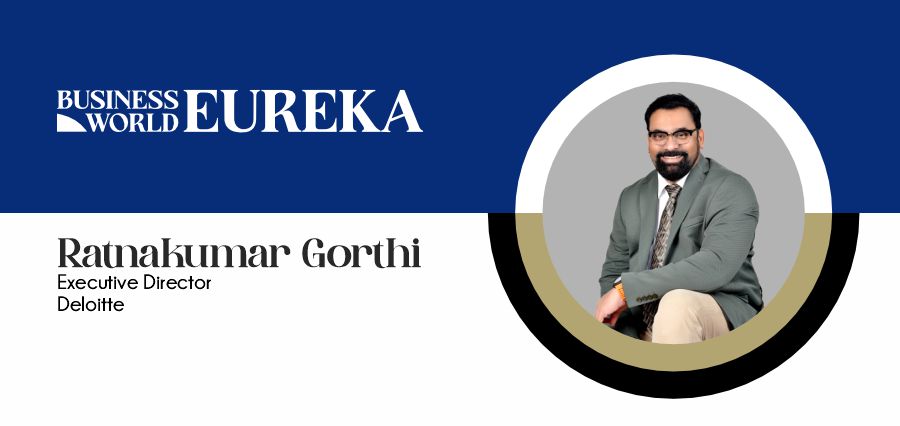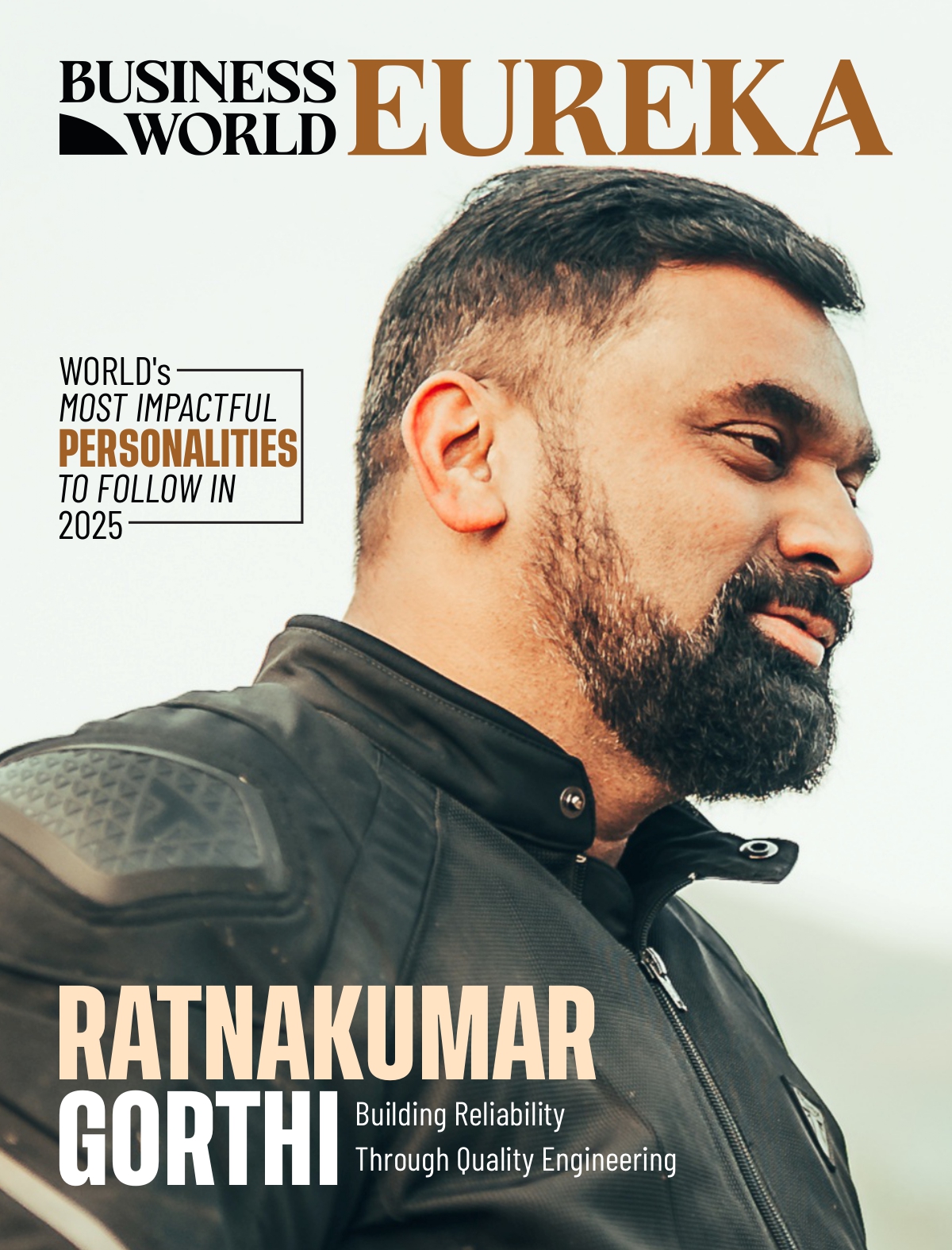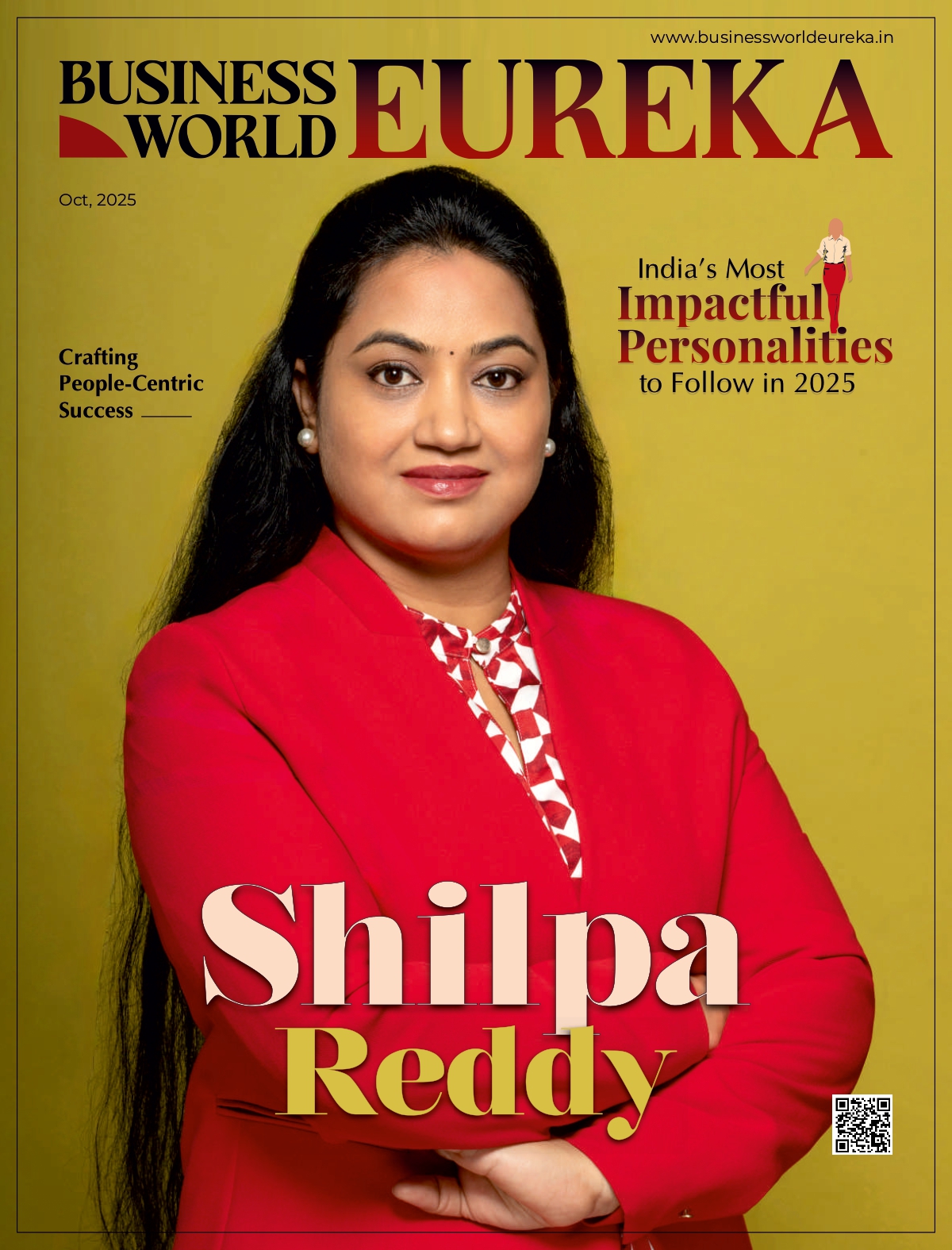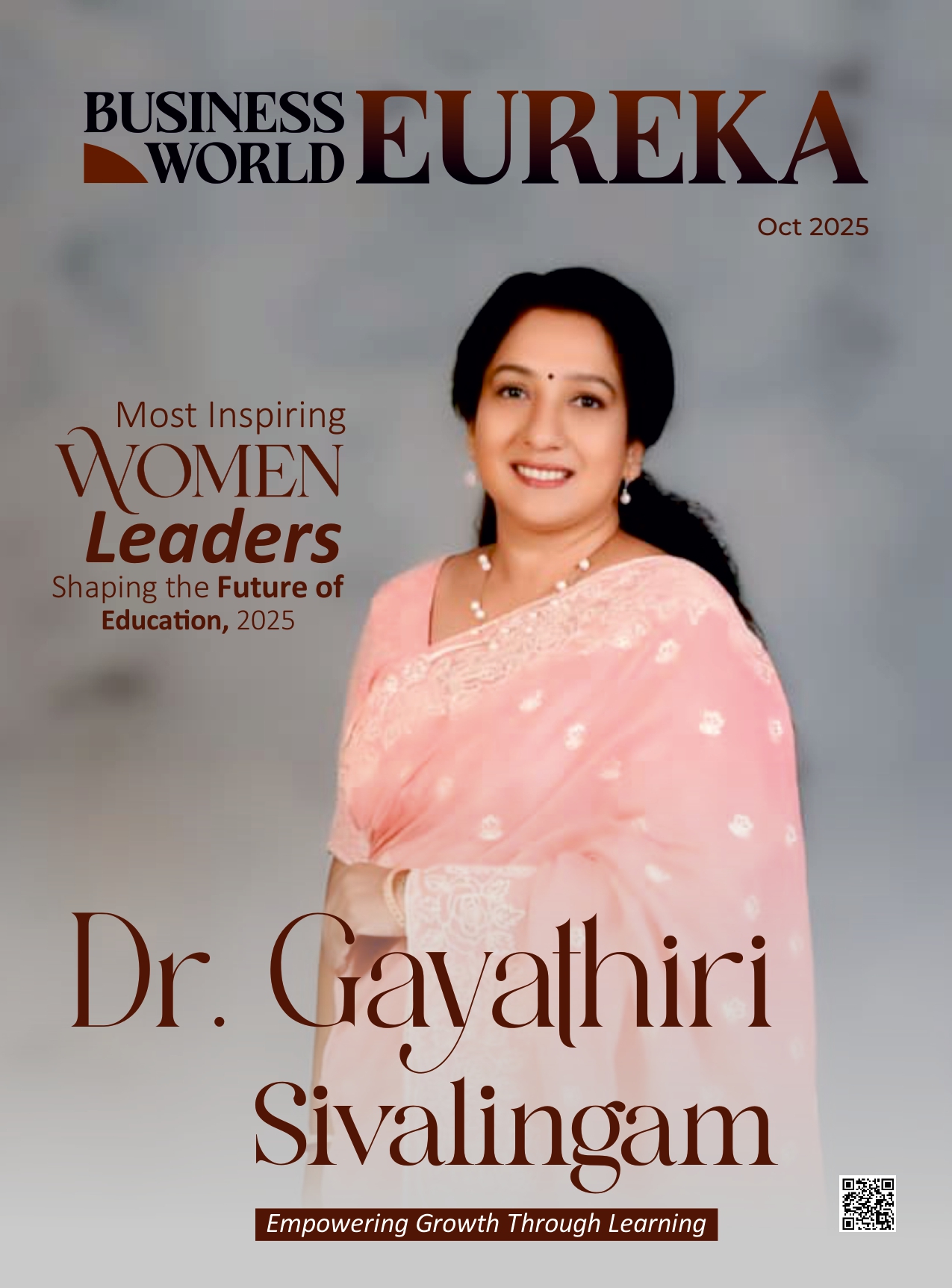Ratnakumar Gorthi: Building Reliability Through Quality Engineering

Turning Testing into a Strategic Foundation for Business and Technology Alignment!
Every successful digital system, regardless of its complexity, relies on one constant: trust. It is what holds together lines of code, user confidence, and business success. For Ratnakumar Gorthi, this trust has been the cornerstone of a career spanning over three decades. As technology transformed from monolithic systems to intelligent, cloud-driven ecosystems, he formed his journey around one belief: quality is the language through which technology earns credibility.
Ratnakumar’s fascination began early, with a curiosity about how systems behave under pressure and what makes them fail. While others saw testing as a routine task, he saw it as a discipline of discovery, a way to understand and strengthen the invisible threads that connect performance, reliability, and user experience.
As the industry matured, so did his vision. Testing evolved into Quality Engineering, a field that expanded from detecting issues to designing resilience. Ratnakumar championed this transformation, guiding teams to see quality as an ongoing responsibility that fuels innovation rather than delays it.
Through his leadership, Quality Engineering became less about checkpoints and more about culture. His approach encouraged organizations to treat quality as a shared value that touches every part of product delivery.
Today, as a Quality Engineering practice leader and innovation evangelist, Ratnakumar persists to cultivate how enterprises approach technology assurance. For him, quality is more than precision, it is a promise. A promise that every digital experience will stand on the foundation of trust he has spent a lifetime perfecting.
The Moment That Redefined His Perspective on Quality Engineering
Every transformative journey has its defining moment, and for Ratnakumar Gorthi, it came when he recognized the untapped potential of Quality Engineering. At a time when testing was often viewed as a routine, low-profile task that demanded immense effort even with the rise of automation tools, he saw an opportunity to completely reimagine its purpose. He shifted the focus from simply detecting defects to engineering excellence through optimization and foresight.
Determined to elevate the discipline, he began developing his own methodologies and frameworks, blueprints designed not just for efficiency, but for enduring value. His approach emphasized reusability, effort optimization, proactive risk management, and a culture of continuous improvement. Under his guidance, teams learned to move beyond test execution and embrace quality as a strategic enabler of delivery confidence. Through this, Ratnakumar helped redefine what was once considered a support function into a critical driver of innovation and trust across the enterprise.
The Evolution of Quality Engineering Through Technological Shifts
As the world of software testing evolved, so did Ratnakumar Gorthi’s approach, with each technological shift marking a new chapter in his journey. The transition from “Testing” to “Quality Engineering” was more than a change in terminology; it symbolized a profound mindset shift across the industry, moving from detecting defects at the end of the process to building quality into every stage of development.
In the late 1990s, when testing was still an extension of development and often handled by developers themselves, Ratnakumar was already blending both worlds. He wrote code and tested it with equal passion, creating reusable templates and small utilities that reduced manual effort and saved cost, early signs of the efficiency-driven mindset that would define his career.
As independent testing teams began emerging in the early 2000s, he saw an opportunity to professionalize the discipline. He embraced automation tools long before they became mainstream and began crafting frameworks that transformed repetitive validation into intelligent execution. His focus during this era was clear: do more with less, without compromising on quality.
By the time Agile methodologies began reshaping software delivery around 2010, testing could no longer afford to live at the tail end of the lifecycle. Ratnakumar adapted swiftly, championing the “shift-left” philosophy to identify defects earlier and embed quality closer to design. He strengthened his teams through both technical upskilling and deep domain knowledge, ensuring testers could think like users as well as engineers. This blend of technical depth and business understanding became a hallmark of his leadership.
When DevOps took center stage a few years later, he once again expanded his vision. He viewed Quality Engineering as an inclusive, always-on layer within the DevOps pipeline, a bridge connecting development speed with delivery assurance. His focus turned to end-to-end automation, continuous testing, and measurable improvement, ensuring that quality evolved hand in hand with velocity.
The AI revolution of the 2020s marked a defining era for Quality Engineering. Where once the question was “How can testing be faster?”, Ratnakumar reframed it to “How can systems assure their own quality?” He began embedding intelligence across the delivery lifecycle, from requirements to production, ushering in an age of predictive, adaptive, and autonomous assurance. For him, AI was never about replacing testers; it was about elevating them into quality architects, professionals who design reliability rather than simply verify it.
Through each decade of change, Ratnakumar has continued to lead from the front, anticipating shifts before they became trends. His journey mirrors the evolution of Quality Engineering itself, a journey from validation to vision, from assurance to autonomy.
The Role of Empathy in an Automated World
For Ratnakumar Gorthi, the promise of Generative AI and automation is undeniable, but so is the risk of losing the very quality that makes technology meaningful – empathy. He often says that while machines can think faster, only humans can care deeper. AI may generate test cases, predict outcomes, and automate entire workflows, but it cannot grasp the subtlety of human intent, the accountability, context, and compassion that define true quality.
In his philosophy, empathy is not a soft skill; it is a strategic necessity. It ensures that every algorithm and every automated decision remain rooted in the user’s reality and the business’s purpose. To him, innovation is about augmenting intelligence with conscience rather than replacing human judgment with machine speed.
He envisions a future where technology works flawlessly and feels relevant, where automation operates with precision and understanding. That, he believes, is the ultimate expression of progress, when intelligence and empathy coexist in harmony.
Turning ESG Principles into Practice within Quality Engineering
For Ratnakumar Gorthi, Environmental, Social, and Governance (ESG) is not an external mandate. It is a professional responsibility that must be woven into every layer of Quality Engineering. He believes true digital excellence cannot exist without sustainability, inclusivity, and accountability.
On the environmental front, his approach reimagines Quality Engineering as a low-carbon, resource-efficient discipline. By optimizing test environments, standardizing tools, adopting cloud and Infrastructure-as-Code, and leveraging synthetic data on demand, teams can cut energy use, reduce waste, and minimize infrastructure sprawl, all while improving quality and cost efficiency.
The social dimension, according to him, is about humanizing technology. Through accessibility and fairness testing, security assurance, and inclusive design, Quality Engineering can foster a more equitable digital experience for all. He also advocates for diversity in teams, equitable hiring practices, women’s empowerment, and continuous learning as part of ESG-aligned workforce development, ensuring innovation is as inclusive as it is intelligent.
Finally, under governance, he champions sustainable test management by embedding ESG metrics, predictive risk modeling, and automated dashboards into Quality Engineering processes. He envisions a future where ESG impact is tested, verified, and continuously improved.
In his vision, Quality Engineering becomes a force for sustainable progress, balancing performance with purpose, innovation with integrity, and automation with empathy.
The Mindset Behind Balancing Efficiency and Excellence
For Ratnakumar Gorthi, the pursuit of perfection in Quality Engineering means testing what truly matters. He often says there is no such thing as 100 percent testing, but there is 100 percent clarity in purpose. His philosophy is built on the belief that precision and intelligence, rather than volume, define quality.
By striking the right balance between the minimum testing required to maximize defect detection and the optimal use of tools, utilities, and solutions, he has reimagined how cost and quality can coexist without conflict. Every optimization, in his view, must strengthen capability and never dilute it.
His approach to engineering excellence centers on systemic simplification, eliminating redundancy, minimizing manual effort, and designing for reusability. Through intelligent automation, data-driven decision-making, and standardized frameworks, he has led teams to achieve what many consider the ideal equilibrium, high performance at optimized cost.
For him, excellence is a function of doing what matters, smarter, faster, and with unwavering trust. In a world driven by speed and innovation, he continues to remind the industry that quality, at its core, is never a checkpoint but a promise.
Staying Real and Connected in Leadership
Across three decades of leading diverse global teams, Ratnakumar Gorthi defines leadership not by authority but by authenticity. For him, true leadership is about connection, credibility, and consistency.
He stays grounded by remaining accessible, transparent, and empathetic, qualities that have earned him the trust of teams spread across geographies and generations. His leadership philosophy is deeply human: listen more than speak, mentor with humility, and celebrate every win, no matter how small.
For Ratnakumar, authenticity is the new currency of leadership. Titles may open doors, but it is integrity that inspires followership. His team’s confidence in his vision comes from a simple truth—his actions always mirror his words.
Along with driving outcomes, he is deeply invested in shaping the leaders of tomorrow. He believes every decision made today should resonate with the aspirations of future generations. In his eyes, leadership is a relay, where the baton must be passed seamlessly, with wisdom, trust, and purpose intact.
In an era defined by disruption and digital transformation, Ratnakumar stands as a reminder that the most powerful form of leadership remains timeless, leading with empathy, empowering through trust, and inspiring by example.
Lessons in Empathy from Leading Transitions
Leading large-scale transitions taught Ratnakumar that organizations are defined not only by processes but also by emotions. During times of change, people experience uncertainty, hope, and fear all at once. He learned that empathy is not just a leadership virtue but a strategic tool.
During major transitions, he went beyond standard handover protocols. He trained incoming teams on the Kübler-Ross emotional curve, helping them recognize and navigate the natural psychological responses to change. To make knowledge transfer more effective, he created structured, close-ended questionnaires that guided teams toward clarity and trust during handovers, turning what could have been friction points into moments of collaboration.
His philosophy remains simple yet powerful. He believes that if people are engaged with honesty, clarity, and compassion, resistance transforms into participation. That belief became the foundation of his approach to organizational change.
Staying Clear-Headed and Confident in High-Stakes Negotiations
In high-stakes discussions, Ratnakumar centers himself on purpose, the value being created, rather than the deal being closed. He views negotiations as conversations to co-create outcomes rather than contests to win. This mindset allows him to stay composed and authentic. His confidence stems from preparation, clarity, and belief in the solution’s merit.
By focusing on transparency and impact rather than persuasion, he builds credibility even in challenging negotiations. For him, confidence comes from being aligned with integrity rather than being certain of victory.
Staying Flexible and Focused in Large-Scale Programs
For Ratnakumar Gorthi, leadership in large-scale programs is about anticipating change rather than reacting to it. He believes that the best leaders prepare for disruption instead of waiting for it. His consistent message to teams is clear: “Anticipate change, do not fear it, every challenge is an opportunity to innovate.”
This proactive mindset enables him to navigate complex transformation programs with calm precision. Under his leadership, tools such as Quality Gates, burn-down charts, and predictability graphs serve as early-warning systems that highlight risks before they grow. His data-driven discipline helps teams create timely mitigation plans and remain agile while maintaining focus on delivery excellence.
For Ratnakumar, agility is about moving with awareness rather than speed. His leadership philosophy, which he calls flexible discipline, reflects this balance, firm on purpose yet fluid in execution. In his view, plans may change, technologies may evolve, and priorities may shift, but the vision remains steady: to deliver consistent value with clarity, confidence, and accountability.
Forming Leadership Through Global Collaboration
Global exposure has not only broadened Ratnakumar Gorthi’s perspective, it has refined his leadership philosophy. Having collaborated with teams across India, the US, Australia, the UK, Europe, and Japan, he discovered that while excellence takes many forms, respect remains the universal language of leadership.
From the structured precision of Western delivery models to the ingenuity and agility of Indian teams, Ratnakumar has drawn the best from every culture to shape his own leadership DNA. He views diversity as a catalyst for creativity and innovation rather than a checkbox or compliance goal. In his perspective, true global competence lies in balancing cultural nuance with collective purpose.
By fostering inclusion, he builds teams that are culturally aware yet globally aligned, teams that think differently but act together. Under his guidance, collaboration transcends borders, and excellence becomes a shared value rather than a regional strength.
For Ratnakumar, leadership across continents is about celebrating differences and turning that diversity into a powerful engine of innovation and unity.
The Discipline Behind Endless Innovation
Ratnakumar Gorthi believes that innovation, like mathematics, is infinite. As numbers stretch endlessly along a number line, so do the ideas waiting to be discovered. He often draws this parallel to remind teams that innovation is an ever-expanding continuum. The complexity may rise, just as numbers evolve from natural to irrational, but there is always another idea waiting between two thoughts.
For Ratnakumar, friction means change is real. Resistance is the proof of innovation. What carries him through moments of pushback is conviction, an unshakable belief in the purpose behind the idea, and the patience to let results speak louder than rhetoric.
His approach to innovation is both structured and liberating. He has developed frameworks that guide teams to explore possibilities without constraints, evaluate them with rigor, and calculate the potential business impact and ROI before implementation. Every innovation, he insists, must deliver measurable value.
To ensure transparency and trust, Ratnakumar emphasizes continuous tracking and reporting of outcomes, transforming creativity into credibility. For him, innovation is a disciplined pursuit of endless possibilities, powered by purpose, patience, and proof.
The Future of Quality Engineering
As Quality Engineering steps into its next great evolution, Ratnakumar Gorthi foresees Quality Engineering entering an age of autonomous assurance, where systems will self-test, self-heal, and self-certify in real time. However, he emphasizes that even as intelligence becomes automated, judgment must remain human.
He believes that tomorrow’s QE leaders must evolve into architects of trust, combining technical brilliance with ethical clarity, empathy, and a sense of responsibility for how technology impacts people and the planet.
For Ratnakumar, the next decade is about ensuring automation serves integrity rather than simply achieving faster testing or smarter tools. He often says, “The future of Quality Engineering will be defined not by how intelligent our systems become, but by how responsibly we shape them.”
Quotes:
“The future of Quality Engineering will be defined not by how intelligent our systems become, but by how responsibly we shape them.”
“For Ratnakumar, leadership across continents is about celebrating differences and turning that diversity into a powerful engine of innovation and unity.”
“Ratnakumar believes that if people are engaged with honesty, clarity, and compassion, resistance transforms into participation. That belief became the foundation of his approach to organizational change.”
Latest Editions
-
 World's Most Impactful Personalities to Follow in 202514 Nov 2025 magazines
World's Most Impactful Personalities to Follow in 202514 Nov 2025 magazines -
 India’s Most Impactful Personalities to Follow in 202510 Nov 2025 magazines
India’s Most Impactful Personalities to Follow in 202510 Nov 2025 magazines -
 India’s Most Impactful Personalities to Follow in 202505 Nov 2025 magazines
India’s Most Impactful Personalities to Follow in 202505 Nov 2025 magazines -
 India's Most Influential Business Leaders To Watch in 202505 Nov 2025 magazines
India's Most Influential Business Leaders To Watch in 202505 Nov 2025 magazines -
 Most Inspiring Women Leaders Shaping the Future of Education, 202501 Oct 2025 magazines
Most Inspiring Women Leaders Shaping the Future of Education, 202501 Oct 2025 magazines

